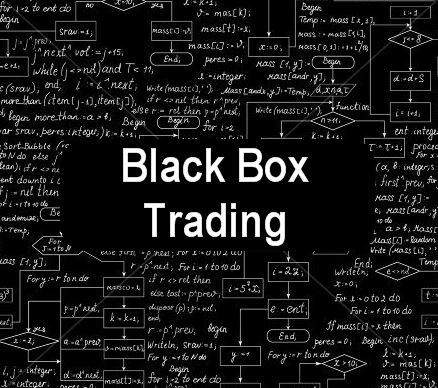The term black-box trading is commonly used to describe an automated trading system used to turn a profit through automated trading. Each black box consists of algorithms that deliver a specific trading strategy. Whatever frequency or infrequency you choose, trades are automatically placed.
A black box can refer to various techniques, including fundamental technical indicators, candlestick formations, trend lines, pivot levels, Fibonacci lines, and so on.
A tool applied based on price that you have never explored, researched, or fully understood its academic premise should be considered a black box for you. You can use a black box to acquire any tool from a guru. Black boxes are a lot more common than you think. Anything you don’t have a good explanation for “WHY” is considered a black box.

By viewing black box systems from this broader perspective, we can make them seem more legitimate and integral to trading.
It’s time to take a closer look at these techniques and learn why they are black boxes.
Technical Indicators
A system does not have to be automated to qualify as a black box. The use of technical indicators is a common tool at the disposal of traders.
Prices, volumes, and open interest forecast future market movements by accumulating historical data. It relies on complex data accumulation and formulation to guide traders’ actions. Traders widely accept this algorithmic formulation, but in reality, it is a black box system: it relies on complex data accumulation and formulation.
Candlestick Patterns
The candlestick bar is a traditional way to view trends using data points such as prices, highs, lows, and ranges over time. Like technical indicators, this chart shows the combination of data that traders use to guide their trading efforts.
While Candlestick patterns trading rules guides hold some truth, the markets don’t care what shapes and formations are formed by their activity. Harami patterns can work the same way at times, but at other times they won’t if you, as a trader, are not able to understand why candlestick patterns should be considered a black box.
Trend Lines, Fibonacci levels, Pivots, Support & Resistance.
Another type of non-conventional black box, known as system trend lines, serves as resistance and support lines. If those levels would always work, the market would range forever and predictably.
In other words, why would these levels break? Why would they be respected? Are there any rules for how often a trendline should be respected before it breaks? Of course not. Is there a way to explain a false breakout? Prices should behave the way they do for a reason, like all other black boxes.
Bottom Line
You need to understand how a black box system works, how the market works, and how the two interact to leverage it effectively.
Our brains can become the most influential black boxes if we learn why prices move the way they do, what motivates a retracement, and why prices are flagging.

To create compelling and well-trained black boxes powered by our brains, we must transform the black box from something obscure and shrouded in mystery into something familiar and understood. Our ignorance and lack of knowledge will save us from blindly relying on complex systems we don’t even understand if we get a little better at it.


